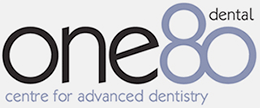The ability of a wound to heal quickly is obviously important; but you may not appreciate that wound healing is a critical part of all our surgery here at one80dental.
Of course there are surgical incisions that heal quickly in the right circumstances, but most of the healing we deal with is different.
When a tooth is removed, however carefully, we are left with a space. Frequently we are aiming to replace a missing tooth with an implant supported restoration (crown or bridge), and this works best where implants are placed into healthy jaw bone.
The space left when a tooth is extracted will heal, but slow healing, where a site becomes even slightly infected, leads to significantly less bone.
Promoting quick healing involves stabilising the extraction site, the body knows how to heal itself efficiently. The stabilised site is really important, and that is why we take so much trouble to encourage patients to follow post-operative instructions.
The site will attract proteins and start the healing process. Any means to speed this up has been eagerly anticipated, however the available options have been far too expensive, and often involve these proteins from other people, or animals.
New technology allows us to collect these proteins and concentrate them, and place them where they are needed. We refer to these proteins as Plasma Rich Growth Factors (or PRGF). A small amount of the patient’s blood is collected (just like a blood test), and then processed here at the practice during their surgical appointment.
This processing provides a number of products, which are used in various ways to stimulate and speed up healing, for example when a tooth is extracted. The technology also provides material to help with healing after implant placement, and also material to help healing following bone augmentation procedures.
Whilst it is early days, I studied growth factors as my main topic for my Master’s degree, which I completed in 2003, so it’s a technology which has proven itself over time, and by using the patient’s own blood is 100% safe.
The system we use – Endoret® (prgf®) – is used in oral surgery to promote bone and adjacent soft tissue regeneration in post-extraction defects. The method consists of filling and sealing the post-extraction defects with the standard biological matrix and with autologous fibrin.
The wetting of the implant surfaces with non-activated Endoret® (prgf®) creates a much more favourable biological environment for osseointegration, as a protein interface is achieved that favours cell migration over the new fibrin bridges created between the osseous wall and the implant surface.




